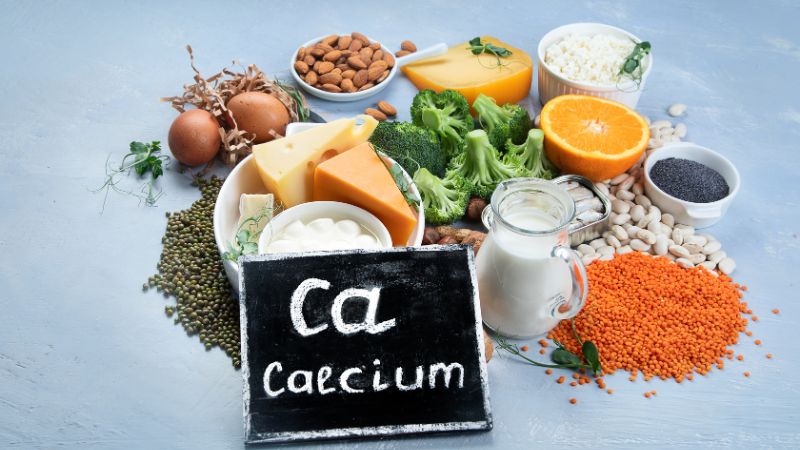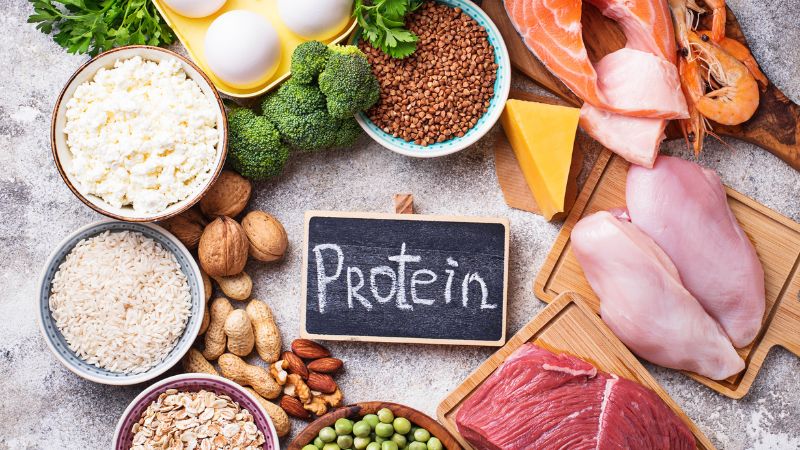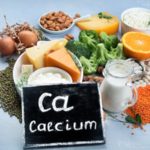A healthy, balanced diet plays a crucial role in nurturing beautiful hair. To prevent hair loss, dryness, and breakage, it’s important to be aware of unhealthy eating habits and make changes for the better.
1 Vitamin A Overconsumption Can Lead to Hair Loss
Hair breakage and loss can be attributed to an unhealthy diet. Vitamin A plays a significant role in stimulating hair follicle growth, boosting immunity, and promoting cell growth.
However, excessive vitamin A intake can lead to hypervitaminosis A, which has adverse effects on the body and can cause hair loss as a side effect.
 Excess Vitamin A Can Cause Hair Loss
Excess Vitamin A Can Cause Hair Loss
2 Calcium Deficiency and Hair Loss
Calcium is also essential for the growth of strong, healthy hair. A lack of calcium can lead to hair loss and thinning.
 Calcium Deficiency Can Cause Hair Loss
Calcium Deficiency Can Cause Hair Loss
3 Consuming Too Much Refined Sugar
Foods high in refined sugar, such as candy, baked goods, and canned drinks, can cause a sudden spike in blood sugar levels. This, in turn, leads to increased production of insulin and androgen hormones.
The excess androgen can cause hair follicles to shrink, resulting in malnourished hair that becomes brittle, prone to breakage, and eventually falls out.
 Excess Refined Sugar Can Lead to Hair Problems
Excess Refined Sugar Can Lead to Hair Problems
4 Overconsumption of Animal Protein
Consuming large amounts of animal protein can interfere with the absorption of other essential nutrients. It is recommended to incorporate plant-based proteins and dairy into your diet to improve overall nutrient absorption, leading to better overall health and stronger, healthier hair.
 Excess Animal Protein Can Affect Hair Health
Excess Animal Protein Can Affect Hair Health
5 Iron and Zinc Deficiency
A lack of iron and zinc is another contributing factor to increased hair breakage and loss.
To maintain healthy hair, it is important to include iron-rich foods in your diet, such as spinach, lentils, beans, and lean meats. Additionally, incorporate zinc-rich foods like pumpkin seeds and whole grains.
 Iron and Zinc Deficiency Can Cause Hair Issues
Iron and Zinc Deficiency Can Cause Hair Issues
6 Fish with High Mercury Content
While fish is a great source of omega-3 fatty acids, which are beneficial for hair growth, certain types of fish, such as tilefish, carp, and fresh tuna, tend to have high mercury levels, which are detrimental to overall health and hair growth.
Long-term mercury buildup in the body not only damages organs but also weakens hair, making it more prone to breakage.
 Fish with High Mercury Content Can Affect Hair Health
Fish with High Mercury Content Can Affect Hair Health
7 Consuming Fatty Foods
A diet high in fatty foods means consuming more saturated fat and hydrogenated oils, which can clog pores and lead to hair breakage. Therefore, it is advisable to limit the consumption of foods that are harmful to hair health to promote stronger, healthier hair.
 Fatty Foods Can Impact Hair Health
Fatty Foods Can Impact Hair Health
8 Alcohol Consumption
Alcohol and beer can interfere with the body’s zinc metabolism, and zinc is a crucial mineral for hair health. Additionally, excessive alcohol consumption dehydrates the body, leading to dry hair that is more prone to breakage.
 Alcohol Consumption Can Affect Hair Health
Alcohol Consumption Can Affect Hair Health
The above information highlights some unhealthy eating habits that can contribute to hair breakage and loss. By making positive changes to your diet, you can improve the health and appearance of your hair!
Source: Health and Life Newspaper
5 Common Micronutrient Deficiencies in Seniors
“Malabsorption is a common issue among the elderly due to their declining digestive function. Discover the 5 most common micronutrient deficiencies in seniors and how to address them.
The aging process brings about a myriad of changes, and one of the most significant is the reduced efficiency of the digestive system. This often leads to a range of micronutrient deficiencies that can impact overall health and well-being. From vitamin B12 and calcium deficiencies to a lack of essential fatty acids, seniors are at risk of developing health issues related to malnutrition. Understanding these common deficiencies is the first step towards ensuring our elderly loved ones receive the care and support they need to maintain their health and quality of life.”




































